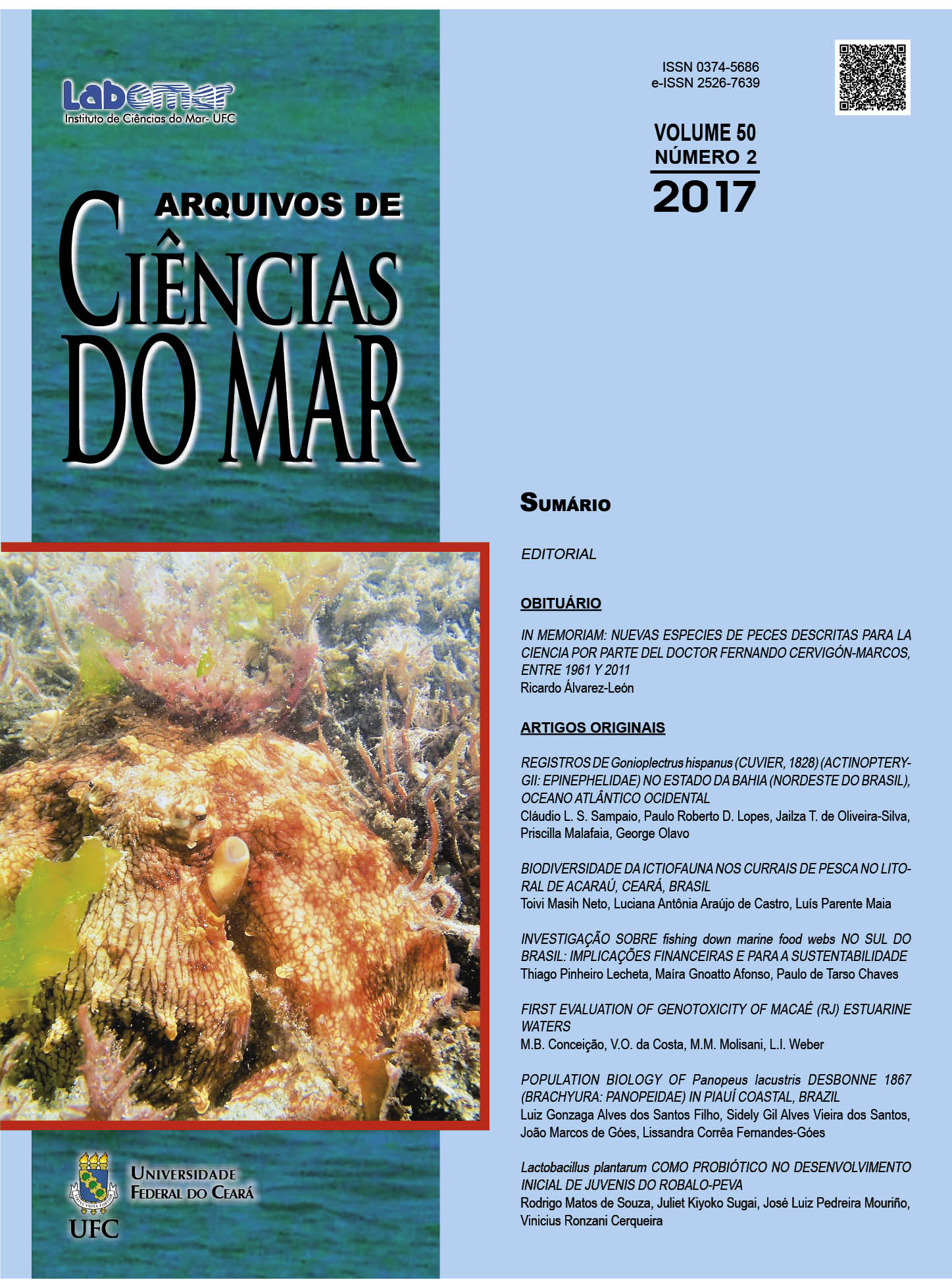POPULATION BIOLOGY OF Panopeus lacustris DESBONNE 1867 ( BRACHYURA: PANOPEIDAE ) IN PIAUÍ COASTAL, BRAZIL
DOI:
https://doi.org/10.32360/acmar.v50i2.31146Keywords:
population structure, relative growth, sex ratio, sexual maturity.Abstract
Specimens of Panopeus lacustris were identified, sexed, and measured to obtain the following dimensions: carapace width, carapace length, body height, the propodus major length, the propodus major wide, the propodus major height, abdomen width and gonopodium length. The average carapace width (CW) and the average weight differed significantly between the sexes. The proportion of righthanded crabs was significantly higher than the left-handed. Males were more frequent in classes 22.41|--25.75 mm, and females in class 19.06|--22.41 mm. Biometric data were subjected to regression using a power function. The morphological sexual maturity width of the carapace showed an average of 12.32 mm on males and 12.00 mm on females. However, it was observed that 50% of physiologically mature crabs presented 11.35 mm of CW for males and 10.61 mm for females. The sex ratio of all crabs analyzed was 1:1.15 (males:females). The data collected during this study suggest that the reproductive period of this species is continuous. The results of this study are common to populations of Brachyura, and indicate that the population of P. lacustris is stable in the environment.
Downloads
Downloads
Published
How to Cite
Issue
Section
License
1. Proposta de Política para Periódicos de Acesso Livre
Autores que publicam nesta revista concordam com os seguintes termos:
- Autores mantém os direitos autorais e concedem à revista o direito de primeira publicação, com o trabalho simultaneamente licenciado sob a Licença Creative Commons Attribution que permite o compartilhamento do trabalho com reconhecimento da autoria e publicação inicial nesta revista.
- Autores têm autorização para assumir contratos adicionais separadamente, para distribuição não-exclusiva da versão do trabalho publicada nesta revista (ex.: publicar em repositório institucional ou como capítulo de livro), com reconhecimento de autoria e publicação inicial nesta revista.
- Autores têm permissão e são estimulados a publicar e distribuir seu trabalho online (ex.: em repositórios institucionais ou na sua página pessoal) a qualquer ponto antes ou durante o processo editorial, já que isso pode gerar alterações produtivas, bem como aumentar o impacto e a citação do trabalho publicado (Veja O Efeito do Acesso Livre).

